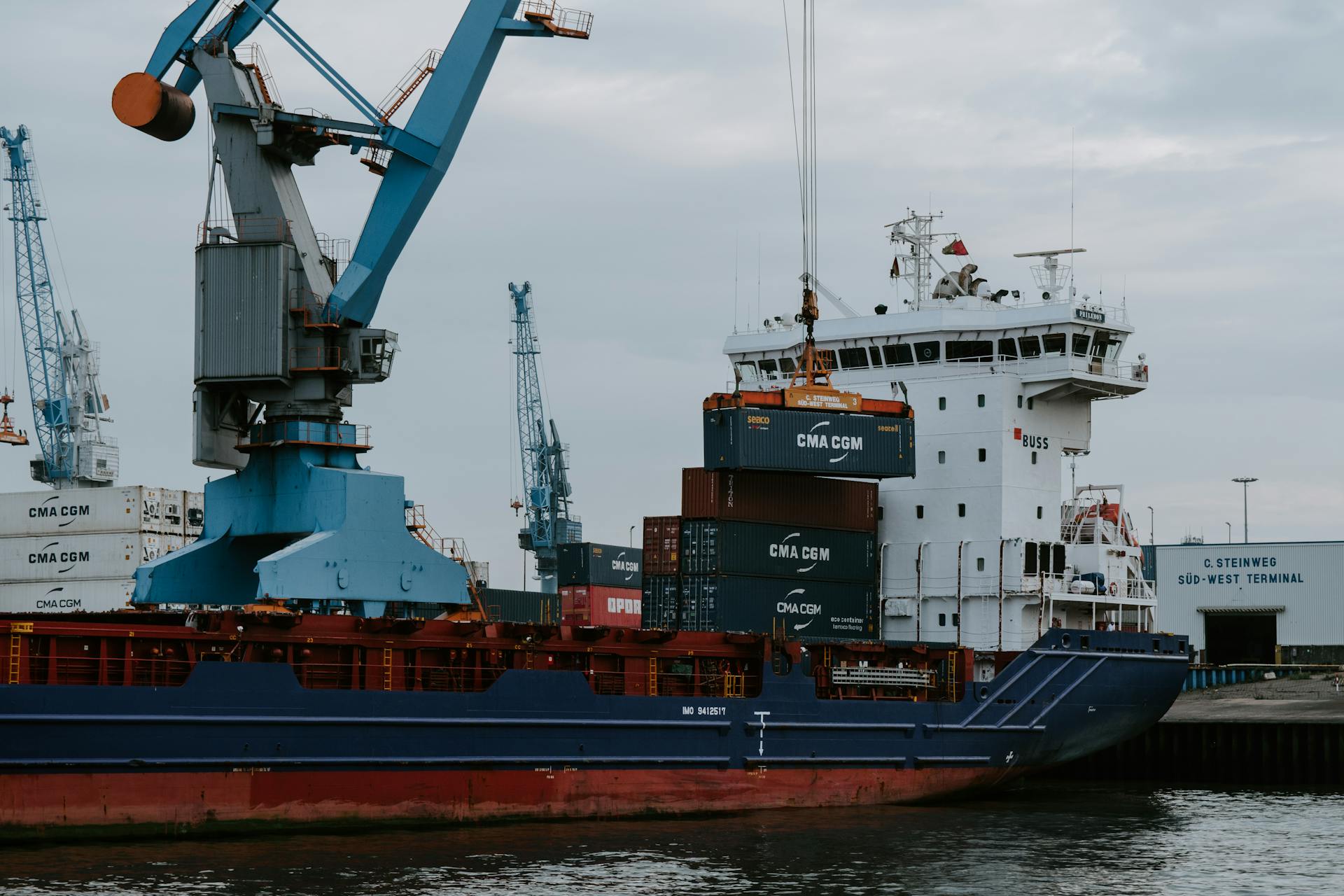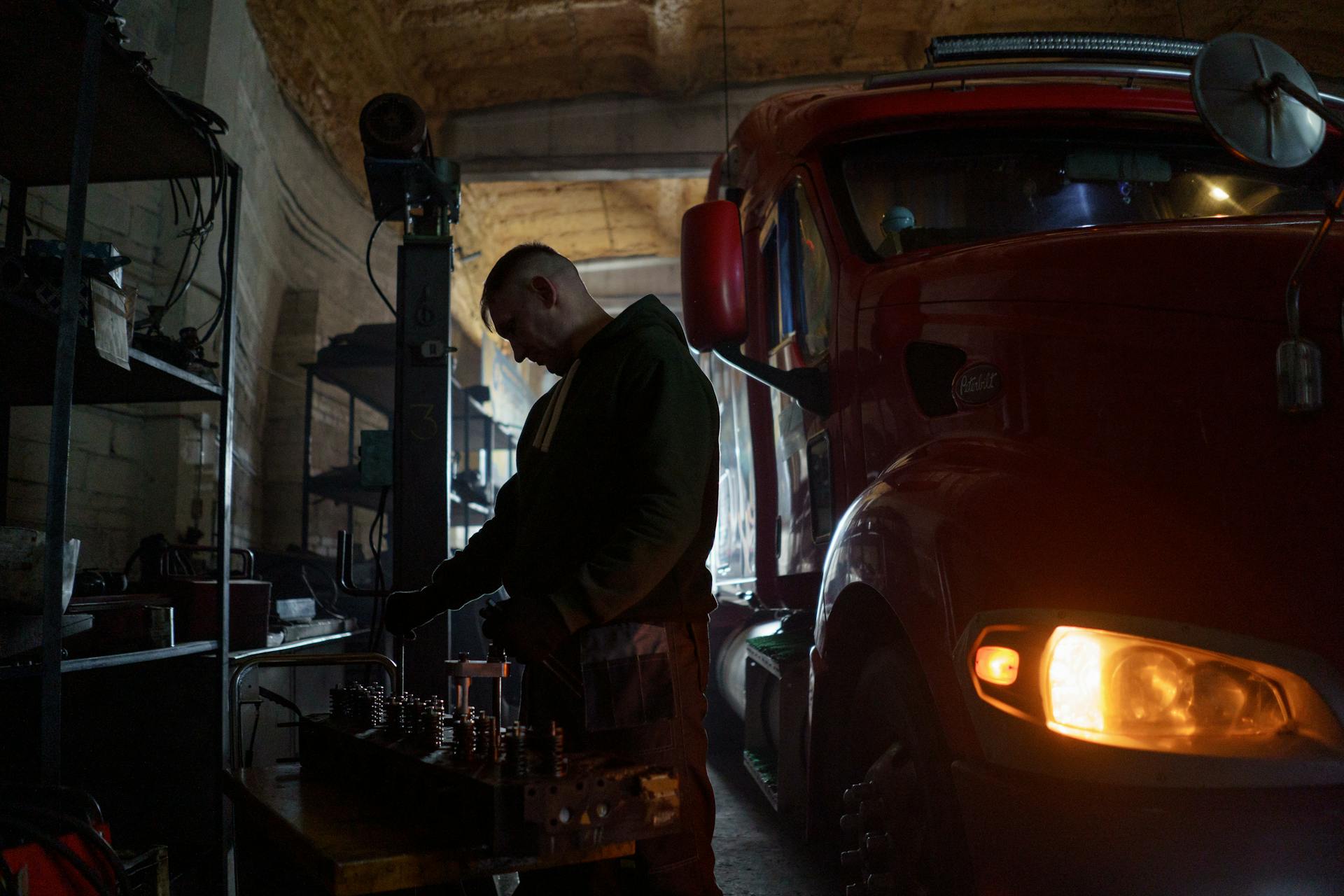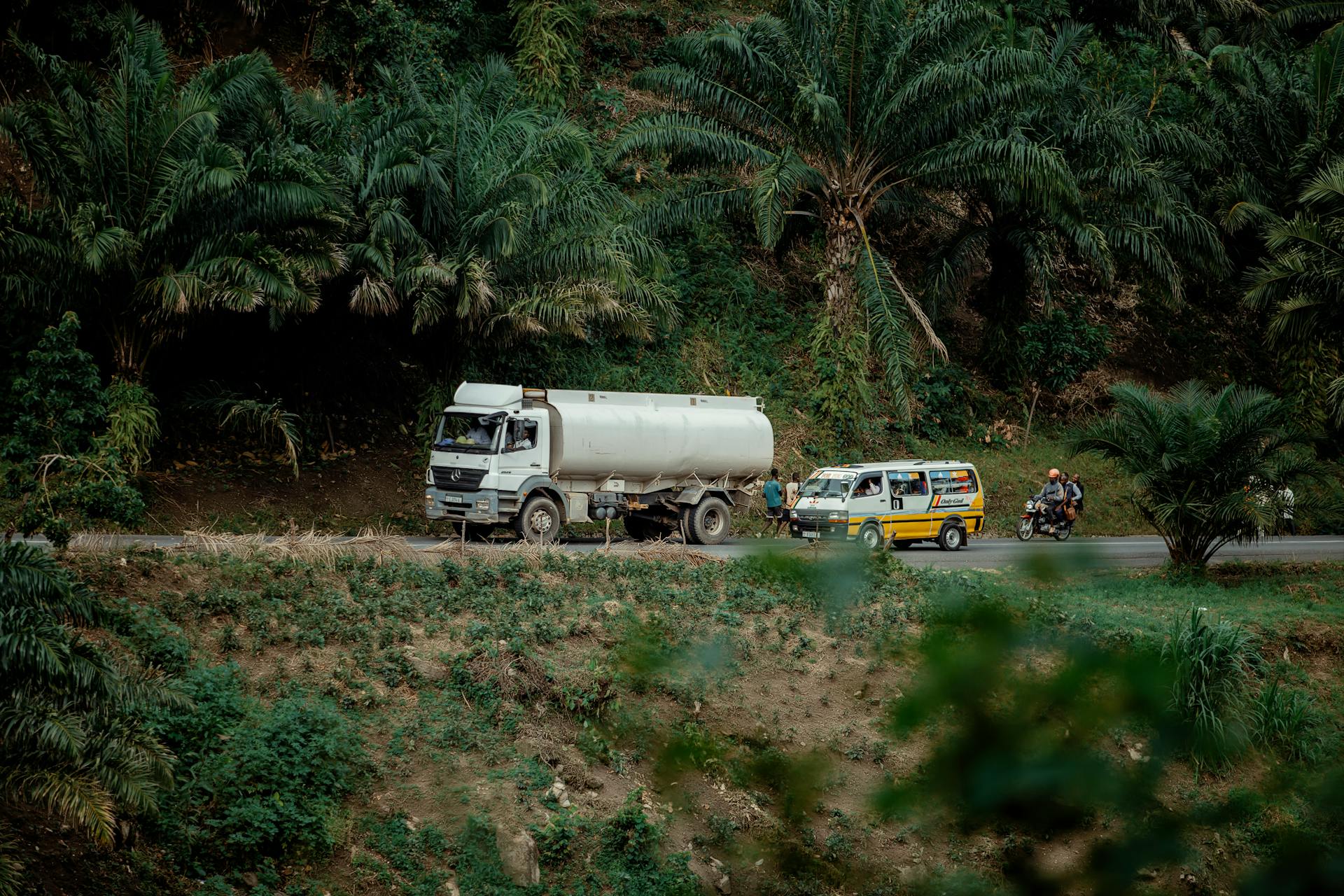
Cargo tank motor vehicles are a crucial part of the transportation industry, but they're also heavily regulated to ensure public safety.
The US Department of Transportation's Pipeline and Hazardous Materials Safety Administration (PHMSA) is responsible for overseeing the safety of cargo tank motor vehicles.
Cargo tank motor vehicles are subject to strict regulations regarding their design, construction, and maintenance. These regulations are outlined in the Code of Federal Regulations (CFR).
The CFR requires cargo tank motor vehicles to be inspected annually, and any repairs or modifications must be performed by a qualified technician.
Tank Markings and Regulations
Tank markings are a crucial aspect of cargo tank motor vehicle regulations. You must display the identification number of the hazardous materials in portable tanks and cargo tanks, which can be found in column 4 of the Hazardous Materials Table.
The identification number must be displayed on black 100 mm (3.9 inch) numbers on orange panels, placards, or a white, diamond-shaped background. If no placards are required, you can use a white, diamond-shaped background.
A unique perspective: Ibc Tote Tanks

You must also show the lessee or owner's name on portable tanks. This is a requirement to ensure accountability and transparency.
The shipping name of the contents must be displayed on two opposing sides of portable tanks. The letters of the shipping name must be at least two inches tall on portable tanks with capacities of more than 1,000 gallons.
On portable tanks with capacities of less than 1,000 gallons, the letters of the shipping name must be at least one inch tall.
Tank Loading and Safety
Tank loading and safety are crucial when handling cargo tanks, especially those transporting hazardous materials. A qualified person must always be watching the loading or unloading process.
This person needs to be alert and have a clear view of the cargo tank. They must also be within 25 feet of the tank and know the hazards of the materials involved. Knowing the procedures to follow in an emergency is also essential.
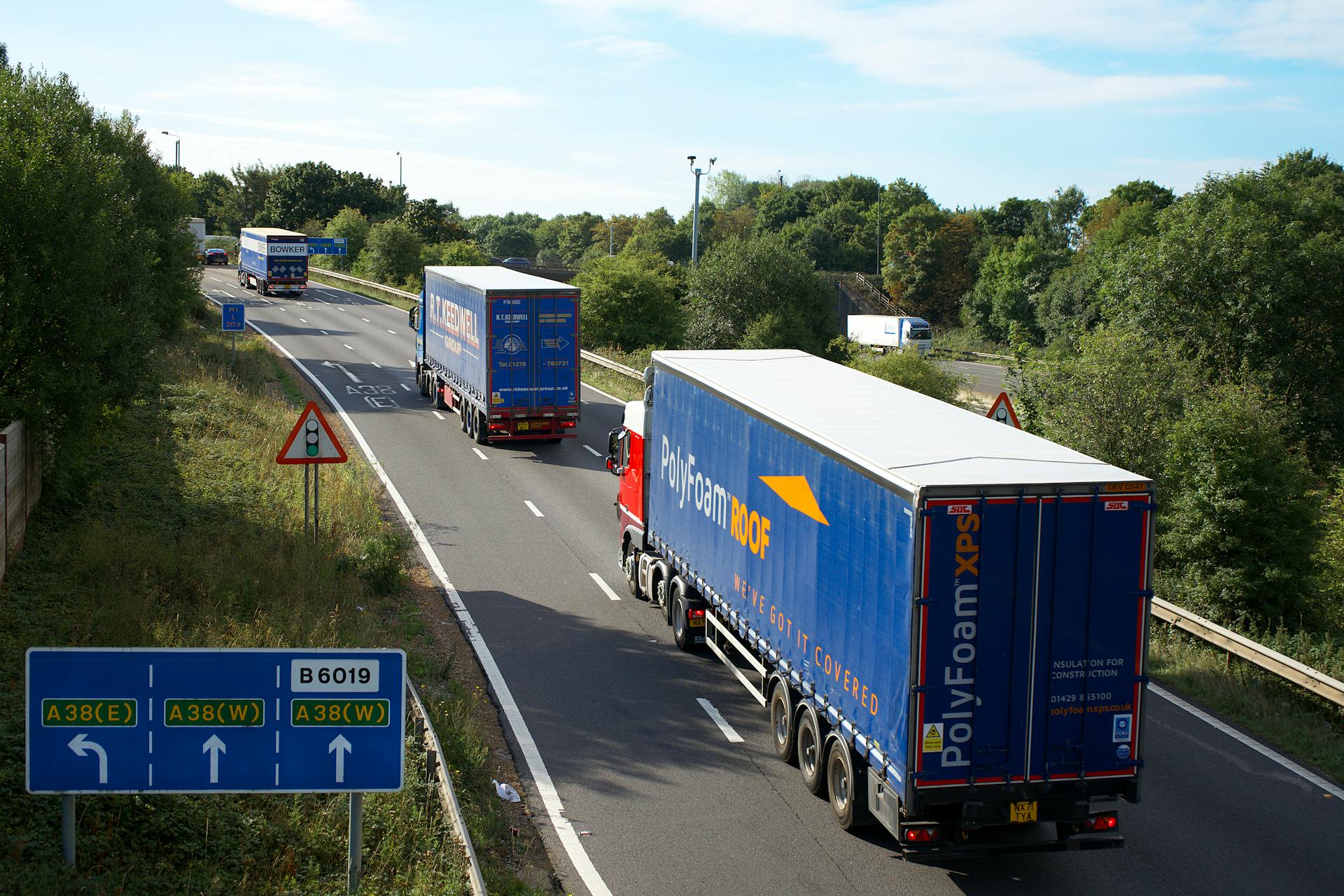
Special attendance rules apply to cargo tanks transporting propane and anhydrous ammonia. It's essential to follow these rules to ensure safe handling.
Before moving a tank of hazardous materials, close all manholes and valves. This is a crucial step to prevent leaks, no matter how small the amount in the tank or how short the distance.
Here are the key requirements for a person watching the loading or unloading process:
- Be alert.
- Have a clear view of the cargo tank.
- Be within 25 feet of the tank.
- Know of the hazards of the materials involved.
- Know the procedures to follow in an emergency.
- Be authorized to move the cargo tank and able to do so.
Hazardous Materials and Equipment
When handling compressed gas tanks, keep liquid discharge valves closed except when loading and unloading.
It's essential to turn off the engine when loading or unloading, unless it's necessary for product transfer.
Always unhook all loading and unloading connections before coupling, uncoupling, or moving a cargo tank.
Hazardous Materials
Hazardous materials are substances that can cause harm to people, animals, or the environment if not handled properly.
Some common examples of hazardous materials include chemicals, pesticides, and fuels.
These materials can be found in various forms, such as liquids, gases, or solids.
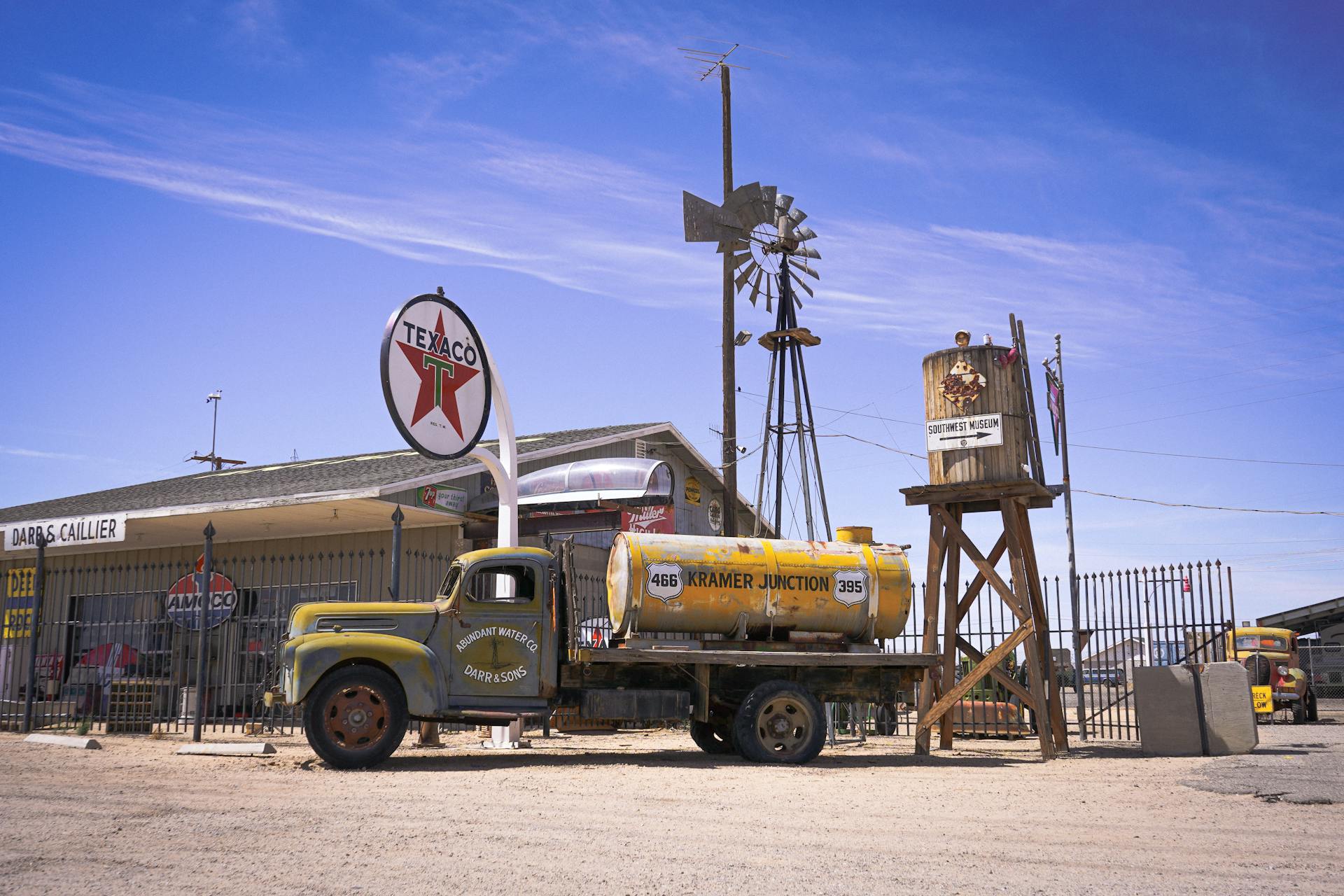
The transportation of hazardous materials requires special precautions, including the use of warning labels and segregation from other cargo.
Many hazardous materials are also highly flammable, which makes them prone to fires and explosions.
The storage of hazardous materials must be done in well-ventilated areas, away from heat sources and ignition sources.
Hazardous Materials and Equipment
When handling hazardous materials, it's essential to take precautions to prevent accidents. Always keep liquid discharge valves on a compressed gas tank closed except when loading and unloading.
To ensure safe handling, turn off the engine when loading or unloading if it's not needed for product transfer. If you do use the engine, turn it off after product transfer, before unhooking the hose.
Unhook all loading and/or unloading connections before coupling, uncoupling, or moving a cargo tank. This is crucial to prevent any potential leaks or damage.
If you're transporting chlorine, make sure you have an approved gas mask in the vehicle. This will protect you in case of an emergency.
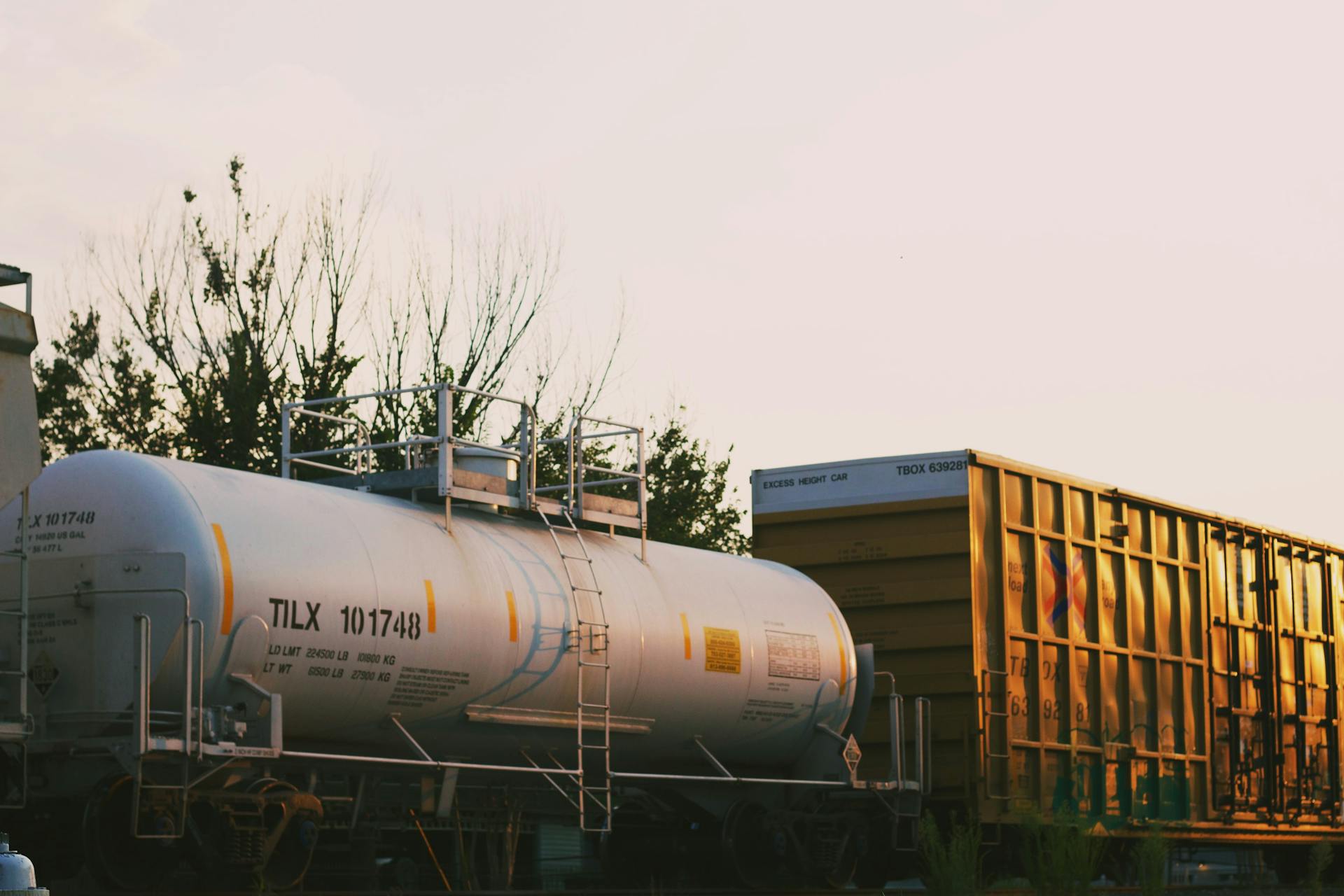
Here are the specific requirements for transporting chlorine:
- Is placarded.
- Carries any amount of chlorine.
- Has cargo tanks, whether loaded or empty, used for hazardous materials.
Don't forget to chock trailers and semi-trailers to prevent motion when uncoupled from the power unit. This simple step can prevent accidents and ensure safe handling.
Inspections and Compliance
Inspections and Compliance are crucial for cargo tank motor vehicles. Regular inspections help ensure the safe transportation of hazardous materials.
En route inspections are required for drivers transporting hazardous materials. They involve checking the tires on the vehicle at the beginning, during, and end of the trip. Tires with problems must be repaired as soon as possible.
A good driver will also check other items during an en route inspection, such as the vehicle's lights and general condition. They'll make sure everything is secure and locked in place.
The regulations establish the minimum tires that must be checked during an en route inspection. However, a thorough inspection goes beyond just checking tires.
For more insights, see: Vehicle Ferry
Frequently Asked Questions
What is a cargo tank motor vehicle?
A cargo tank motor vehicle is a motor vehicle with permanently attached cargo tanks. It's essentially a vehicle designed to transport liquids or gases in specially attached tanks.
Is a cargo tank always permanently attached to a motor vehicle?
No, cargo tanks are not always permanently attached to motor vehicles. They can be detachable to accommodate various transport needs and facilitate maintenance.
What is a cargo tank facility?
A cargo tank facility is a location where cargo tanks or cargo tank motor vehicles are manufactured, assembled, inspected, tested, certified, or repaired. This can include facilities owned by individuals or companies that meet specific safety and regulatory standards.
Sources
- https://dds.georgia.gov/section-95-96
- https://danielstraining.com/faq-what-is-a-cargo-tank-and-or-cargo-tank-motor-vehicle-ctmv/
- https://www.ecfr.gov/current/title-49/subtitle-B/chapter-I/subchapter-C/part-173/subpart-B/section-173.33
- https://www.law.cornell.edu/cfr/text/49/178.345-14
- https://www.bulktransporter.com/fleet-management/tank-fleets/article/21654542/driver-inspection-of-cargo-tank-motor-vehicles
Featured Images: pexels.com
